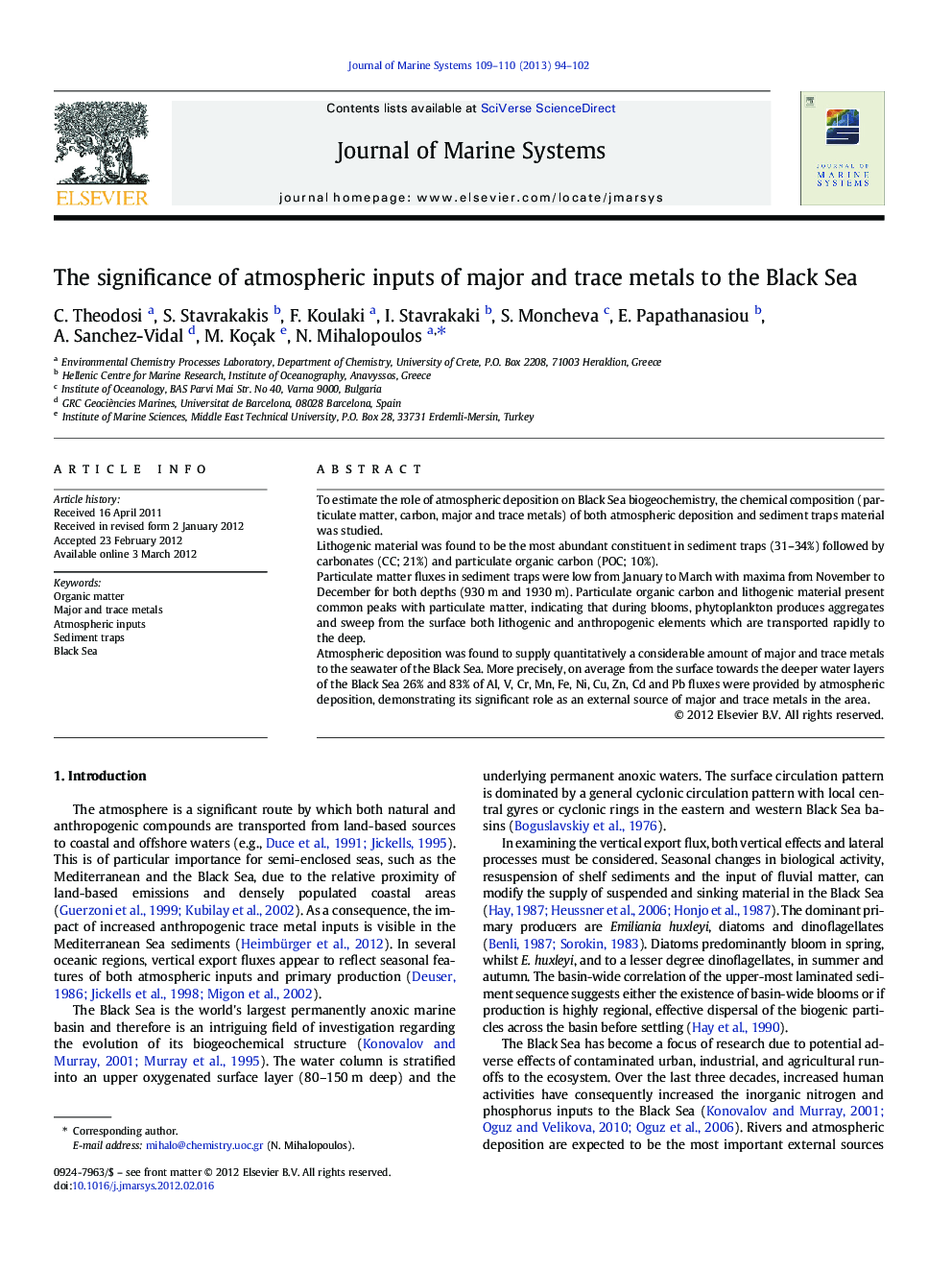| Article ID | Journal | Published Year | Pages | File Type |
|---|---|---|---|---|
| 4548155 | Journal of Marine Systems | 2013 | 9 Pages |
To estimate the role of atmospheric deposition on Black Sea biogeochemistry, the chemical composition (particulate matter, carbon, major and trace metals) of both atmospheric deposition and sediment traps material was studied.Lithogenic material was found to be the most abundant constituent in sediment traps (31–34%) followed by carbonates (CC; 21%) and particulate organic carbon (POC; 10%).Particulate matter fluxes in sediment traps were low from January to March with maxima from November to December for both depths (930 m and 1930 m). Particulate organic carbon and lithogenic material present common peaks with particulate matter, indicating that during blooms, phytoplankton produces aggregates and sweep from the surface both lithogenic and anthropogenic elements which are transported rapidly to the deep.Atmospheric deposition was found to supply quantitatively a considerable amount of major and trace metals to the seawater of the Black Sea. More precisely, on average from the surface towards the deeper water layers of the Black Sea 26% and 83% of Al, V, Cr, Mn, Fe, Ni, Cu, Zn, Cd and Pb fluxes were provided by atmospheric deposition, demonstrating its significant role as an external source of major and trace metals in the area.
